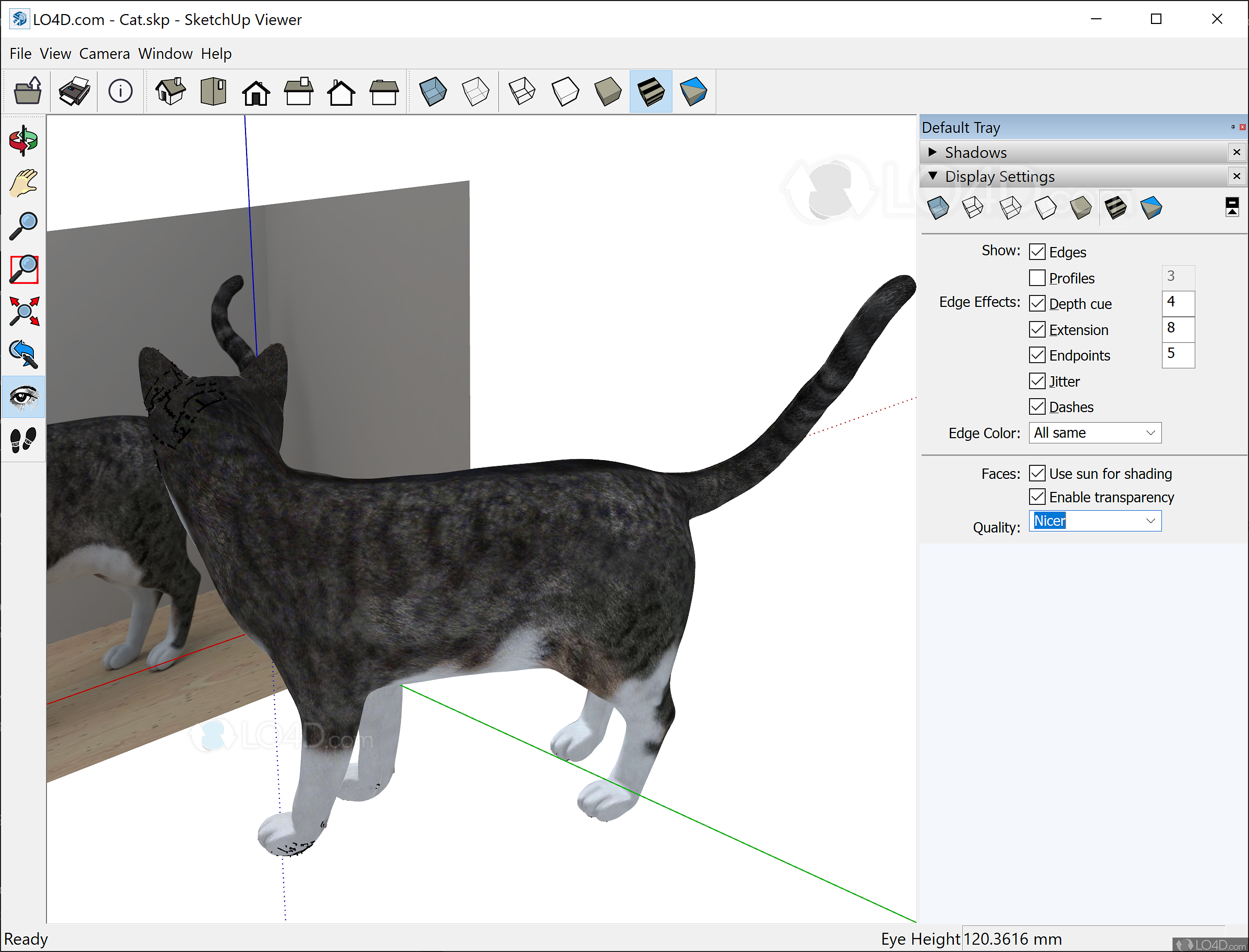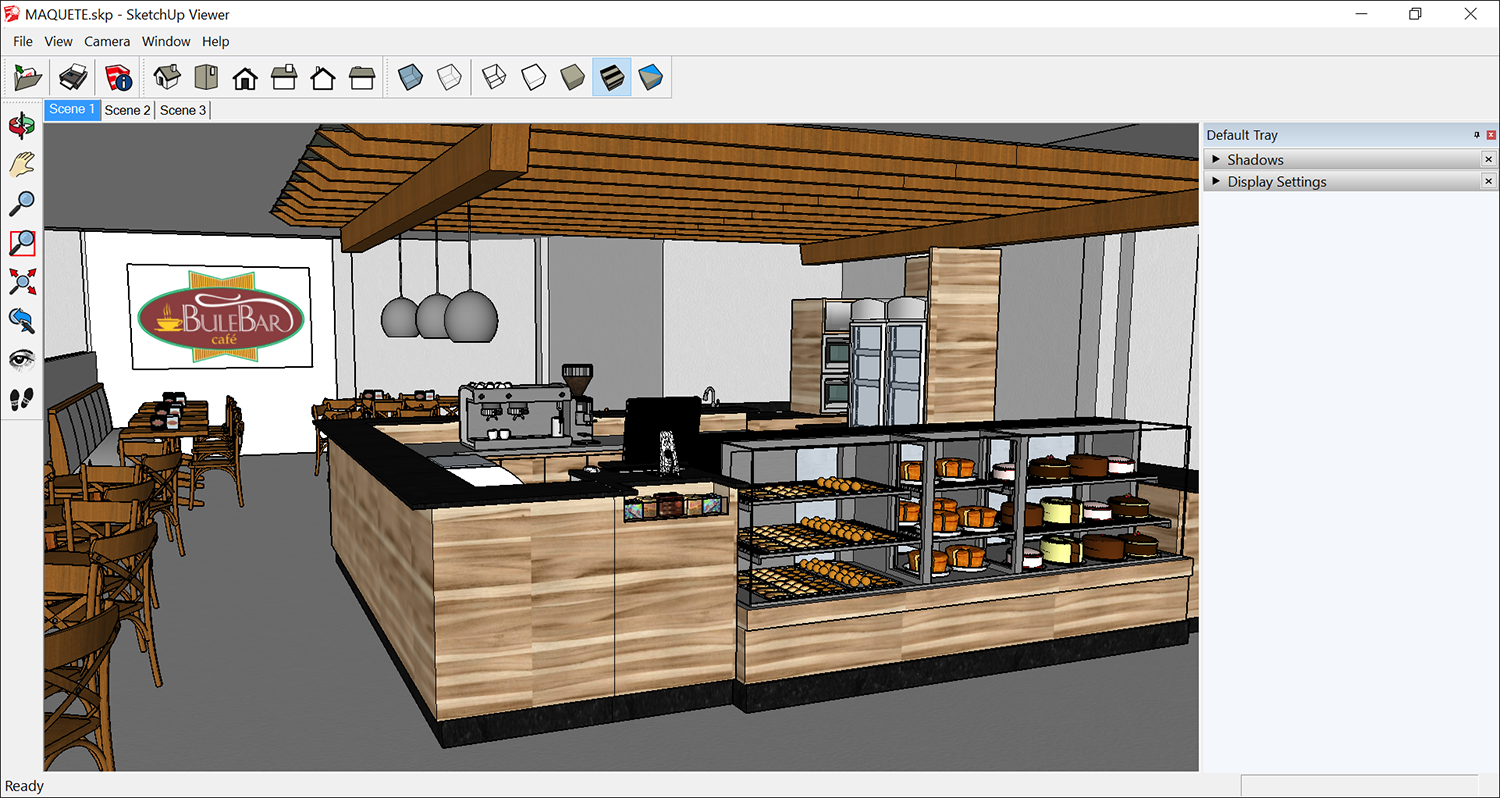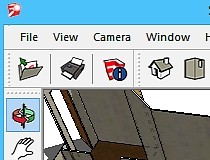
Fog can add a mystical effect, or add a touch of realism to models in foggy places, like San Francisco or London. SketchUp's Shadows feature enables you to study how the time of year and time of day impact the light and shadows in and around your model. To delete a scale, select it in the list box and click Delete Scale button (Microsoft Windows) or the - (or minus sign) button (Mac OS X).
#Sketchup views mac os
On Mac OS X, click the + button (the plus sign) to open a new dialog box where you set the scale. In Microsoft Windows, you add a scale below the list box and then click Add Custom Scale. On the Scales pane, you see a list of available scales in the list box. Click the Add Custom Scale button or the plus sign to set a new scale, and set how you want the size in your model to be scaled on paper. Tip: To access the custom scale options anytime, select Edit > Preferences (Microsoft Windows) or LayOut > Preferences (Mac OS X), and in the Preferences dialog box that appears, select Scales in the sidebar on the left. When this check box is deselected, your model scales as you resize the bounding box.

To show your model's scale in your document, you need to switch to Parallel Projection view, which displays what's also called an orthographic projection. When a SketchUp model is in Perspective view, elements in the model are not to scale.
#Sketchup views pro
Tip: Alternately, you can context-click the entity and, from the menu that appears, select a view from the Standard Views submenu.įor an introduction to SketchUp's standard views, see Viewing a Model in the SketchUp Make and SketchUp Pro area of the Knowledge Center. From the Viewport section, select the scene name from the Scenes drop-down list, as shown in the following figure.Open the SketchUp Model panel by clicking its name in the tray or selecting it from the Window menu.Select the SketchUp model entity in the drawing area.To change the view to a scene from your model, follow these steps: When you import a SketchUp model into LayOut, any scenes you've created are ready to use, which is handy if you want to show those same views in your LayOut document. In SketchUp, scenes enable you to save different views of your model and switch among them.
#Sketchup views how to
Viewing a Model introduces the Orbit, Pan, and Zoom tools, and Walking through a Model explains how to use the Look Around and Walk tools.

Tip: By default, the Orbit tool is active, and you can switch to the Pan tool by holding down the Shift key.

Customizing the Interface and Setting Preferences.Working with Scrapbooks of Reusable Entities.Arranging, Moving, Rotating, and Scaling Entities.Working with SketchUp Dashes in Imported Models.Troubleshooting: Handling SketchUp Model Display Issues.Managing Changes and Updates to SketchUp Files within LayOut.



 0 kommentar(er)
0 kommentar(er)
